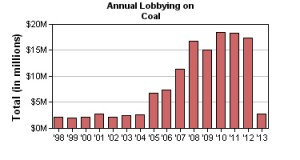“Before a Cat will condescend
To treat you as a trusted friend,
Some little token of esteem
Is needed, like a dish of cream…”
To treat you as a trusted friend,
Some little token of esteem
Is needed, like a dish of cream…”
-T.S.
Eliot
Let’s take a moment to discuss the time honored tradition of
the Congressional travel junket. For those of you not fully aware of what a
travel junket is exactly let me answer it three ways:
If you’re a Senator or Congress member pressed by the
(always uncomfortable) question, you’d answer that a travel junket is a useful
venture in which a Senator or Congress member must travel to a location on a fact finding mission to better
represent their constituents and country as a whole.
If you’re a tax payer or a constituent, a travel junket is a
trip taken by an elected official (and often their spouse or other family
member) for the ostensible purpose of hands on education regarding some pending
legislation. At times you foot the bill. At others, some private entity does. Either
way, in most cases you get nothing of value.
If you’re a lobbyist or corporation or special interest of
any sort, a travel junket is a useful tool in which, by covering the flight and
other associated costs for what amounts to a vacation, you are given extended access
to and many would argue, considerable influence over a particular lawmaker. The
investment can be expensive, but the return is generally well worth the
expenditure.
The travel junket became a point of discomfort for many
voters in 2006-2007 following the discovery of disgraced lobbyist Jack
Abramoff’s frequent use of junkets to lord influence over a number of elected
officials. These fact finding missions included hard hitting research such as rounds
of golf at Scotland ’s
famed golf course, St. Andrews, and trips to the Fiesta
Bowl and Super Bowl. In actuality, those are just some quick highlights.
The list of absurd Abramoff coordinated trips is fairly lengthy.
Of course, following the public revelation and the eventual indictment and
conviction of Abramoff, all of these trips were deemed either demonstrably illegal
or, at the very least, gross misappropriations of an official’s time. Congress passed
a bill reigning in gifts, meals and travel packages from lobbyists and the
number of congressional junkets fell off a cliff—dropping from an all time high
of nearly 5,000
trips in 2005 (at a cost of nearly $10 Million) to 1,846 trips the following
year. The bill limited trip length on foreign travel to seven days and
domestic travel to four days but also allowed for—wait for it—some exceptions.
These exceptions included the allowance of educational and charitable groups to
finance trips for elected officials.
In completely unsurprising fashion, it didn’t take long for
lobbyists and lawmakers to figure out the best way to utilize the exceptions to
their full extent. As an article in the Columbia Journalism Review explained
recently:
The arrangement
works like this: a congressional caucus—an official group of lawmakers (there
are many) with common
characteristics or interests, such as the Congressional Black Caucus or Blue
Dog Democrats or the Congressional Marcellus Shale Caucus—sets up a charitable
organization. That organization, in turn, seeks donations, which do not have to
be disclosed. In addition to its good works, the charitable entity then
organizes events, such as conferences or retreats, in which the caucus members
rub shoulders with contributors. The nonprofit can invite special
interests—corporations, unions, and others—to fork over large donations to
sponsor and participate in these events.
So, not only have lawmakers figured out a way around travel
junket reform, they’ve also figured out a way to turn their vacations into a
fundraising tool. Nice.
Perhaps the most ostentatious abuse of this new “charitable”
junket system came in the summer of 2011, when Eric Cantor arranged for eighty—eighty!—House members and their families
to visit Israel through a charity affiliated with the pro-Israeli lobbying
group American Israel Public Affairs Committee. This massive “fact finding
mission” was capped off quite embarrassingly, with a (quite possibly drunk)
Kansas Representative Kevin Yoder taking a late night skinny
dip in the Sea of Galilee.
So a Congressman quite possibly got drunk, most definitely
got naked and then went for a swim in the body of water Jesus supposedly walked
on. It’s embarrassing and completely unprofessional for sure but not much else,
right? Well, the real problem with Mr. Yoder’s naked dip into biblical waters
stems from the way in which it was discovered. Undoubtedly, Congressman Yoder’s
transgressions would likely have gone undiscovered by the press and general
public had it not been for its documentation in an FBI probe into the trip over
misrepresentation of expenses by some people on the trip.
As it turns out, nothing provably criminal came from the FBI
probe but that is more likely due to the fact that there is a fine line between
illegal and unethical and many of these travel junkets seem to exist comfortably
in that narrowest of spaces. I won’t bother offering up conjecture on the absurd
or unethical activities of the AIPAC junket. Instead, let’s look at Doug
Thompson’s recollections
of the travel junkets he attended as a staffer for the House Committee on
Science and Technology back in the late 80’s:
…On such “official” trips funded by taxpayer
dollars, I saw members of Congress get drunk and pass out, escort young women
to their hotel rooms for the night, lose their “per diem” payments and more at
casinos and engage in other antics that wouldn’t set well with folks back in
their home districts. One member bragged about getting a bl*w job from a
female employee of the American Embassy in Paris London
Of course, all of these junkets were called
“fact-finding” missions but they were, in reality, taxpayer-funded vacations
where Congressional wives shopped at the American Embassy stores, paying
wholesale prices for French perfume, Italian leather goods or duty-free
booze. I still own a gold Heuer watch that I bought at one Embassy store
for about 40 percent of what it would have cost in a jewelry store.
On the flight home from the Paris Air Show in
1985, the largesse from shopping sprees overflowed the cargo holds of the Air
Force KC-135 that provided air transportation so some of it was packed into the
restrooms of the plane, leaving just one for use on the long flight…
Of course this was more than twenty years ago but, aside
from the increase in privately funded junkets, I doubt much has changed. The
travel junket is just one of the perks of being an elected official and that is
unlikely to change any time in the near future. Since 2000, the legislature has
taken over 36,000 privately funded trips at a cost of approximately $83
million. (They’ve taken plenty of tax funded trips as well, though that is
a cost more difficult to pin down.) And while the structure of privately funded
travel junkets may have changed since 2006, the purpose is still the same. The
travel junket is merely a means of lobbying and influence peddling for special
interests outside of Washington —the
proverbial dish of cream, if you will.










